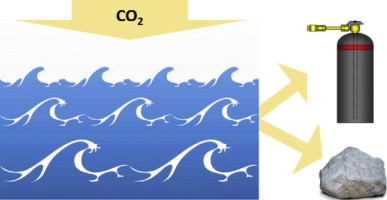International Journal of Greenhouse Gas Control ( IF 3.9 ) Pub Date : 2018-03-07 , DOI: 10.1016/j.ijggc.2018.02.020 Matthew D. Eisaman , Jessy L.B. Rivest , Stephen D. Karnitz , Charles-François de Lannoy , Arun Jose , Richard W. DeVaul , Kathy Hannun

|
Negative emissions technologies (NETs), which result in the removal of CO2 from the atmosphere, will be necessary to limit global warming to 2 °C. Unlike point-source CO2 capture, NETs are agnostic to the emission source, and reduce the existing atmospheric CO2 concentration. This enables NETs to address distributed emissions from transportation and past emissions that have led to existing atmospheric CO2 concentrations. Despite their critical necessity, there are relatively few NETs that have been developed, and existing technologies do not have sufficiently detailed techno-economic analyses to allow comparison for the purpose of strategic investment and policy decisions. An analysis was performed of the economic feasibility of a novel platform of candidate NETs – indirect ocean capture (IOC) – through industry-validated economic and chemical process modeling supported by inputs from a prototype system. This manuscript details the development of a high-fidelity estimate of the cost of avoided CO2 emissions from this NET by coupling scaled experiments to economic analyses. For the lowest-cost scenario of co-location with a desalination plant, a likely cost of $604 per metric ton of avoided CO2 (tCO2) was found, and a best-case cost of $373/tCO2. Through improvements to unit processes, creative process optimization, and reduced carbon-neutral electricity prices, the cost of IOC negative emissions may be reduced in the future. Although NETs won’t likely require deployment for several years in order to limit warming to 2 °C, an objective techno-economic assessment of the options on the table will ensure that the best technology is developed and ready when deployment is required.
中文翻译:

大气中CO 2的间接海洋捕获:第二部分。了解负排放的成本
负排放技术(NETs)可以将大气中的CO 2去除,因此必须将全球变暖限制在2°C以内。与点源CO 2捕获不同,NET对排放源不可知,并且可以降低现有的大气CO 2浓度。这使NET能够处理运输过程中的分布式排放以及导致现有大气CO 2的过去排放浓度。尽管有必要,但已开发的NET相对较少,并且现有技术没有足够详细的技术经济分析,无法进行战略投资和政策决策的比较。通过原型系统输入支持的经行业验证的经济和化学过程建模,对候选NET的新型平台(间接海洋捕捞(IOC))的经济可行性进行了分析。该手稿详细介绍了通过将规模化实验与经济分析相结合,高精确度估算此网避免的CO 2排放成本的方法。对于与海水淡化厂并置的最低成本方案,每公吨避免的CO 2的成本可能为604美元(tCO 2),最佳情况下的成本为$ 373 / tCO 2。通过改进单元流程,创新的流程优化以及降低碳中和的电价,未来可能会降低IOC负排放的成本。尽管NET可能需要数年时间才能将升温限制在2°C以内,但是对桌上的选项进行客观的技术经济评估将确保开发出最好的技术,并在需要部署时做好准备。



























 京公网安备 11010802027423号
京公网安备 11010802027423号